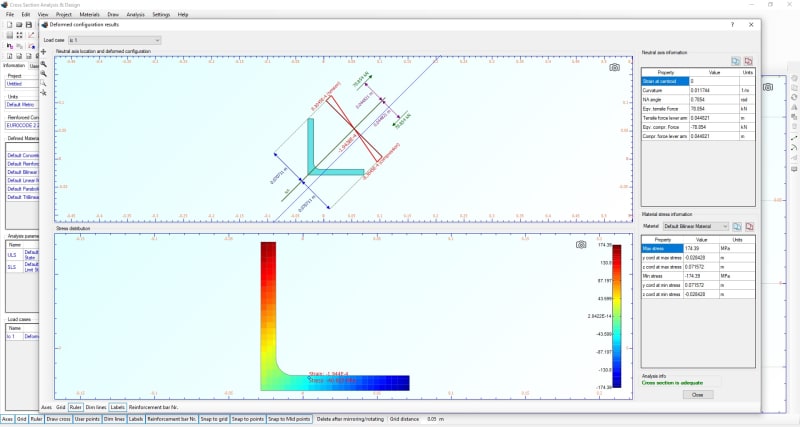I was wondering whether the provision in ANSI∕AISC 360 allow for biaxial bending in angles.
I haven't seen it mentioned explicitly in Section F10.
I saw this quote ... from Design of Steel Equal Angle Lintels, Research Report No R890, N S Trahair, The University of Sydney.
"The American Institute of Steel Construction’s Specification (AISC, 2005a) provides rules for designing equal angle beams which are bent in the plane of one leg."
I thought I saw it mentioned somewhere that design rules may be based on the author's findings.
In some other papers by the same author I think it mentioned large angle rotations up to π/4 or π/2. For this reason I thought maybe the AISC rules may not apply to biaxial bending in angles. But at the same time loads in the plane of one leg are translated into loads in principal major and minor axis.
Does anyone know for sure?
I haven't seen it mentioned explicitly in Section F10.
I saw this quote ... from Design of Steel Equal Angle Lintels, Research Report No R890, N S Trahair, The University of Sydney.
"The American Institute of Steel Construction’s Specification (AISC, 2005a) provides rules for designing equal angle beams which are bent in the plane of one leg."
I thought I saw it mentioned somewhere that design rules may be based on the author's findings.
In some other papers by the same author I think it mentioned large angle rotations up to π/4 or π/2. For this reason I thought maybe the AISC rules may not apply to biaxial bending in angles. But at the same time loads in the plane of one leg are translated into loads in principal major and minor axis.
Does anyone know for sure?


